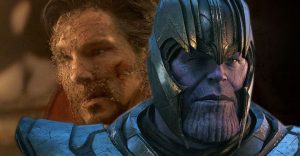No Way Home: Where Each Spider-Man Goes To Be Alone Explained

Warning: This article contains spoilers for Spider-Man: No Way Home.
Three generations of cinematic Spider-Man iterations team up in Spider-Man: No Way Home, while the film also reveals where each one goes for solace. A botched reality-warping spell by Doctor Strange brings two Spider-Man variants and some of their respective villains into the Marvel Cinematic Universe, requiring the three web-slingers to work together to send them back safely and repair the damage done to the multiverse. No Way Home is a dream come true for those who love the various Spider-Man films, as it unites the three cinematic iterations of the iconic superhero and satisfyingly adds to their characterizations.
The MCU, Amazing Spider-Man, and Sam Raimi versions of Spider-Man are largely beloved by filmgoers and comic readers for a variety of reasons. Tobey Maguire’s iteration perfectly blends the classic ’60s and late ’90s/early 2000s eras of Marvel’s mainstream Spider-Man comics for a heartfelt and emotionally sincere depiction of Peter Parker. The humorous and relentlessly likable Spider-Man of Marc Webb’s duo of films is largely inspired by the alternate-universe Ultimate Spider-Man comics mixed with the Gerry Conway and John Romita Sr. era of the mainstream universe. Tom Holland’s MCU version is largely an original take on the web-slinger, though his naturalism and charisma are on par with his two predecessors, winning the hearts of viewers.
When Maguire and Andrew Garfield’s versions of Spider-Man make their long-awaited return to the big screen, they discuss their preferred locations for solitude when deducing where Holland’s character is. Maguire’s Spider-Man goes to the top of the Chrysler Building, while Garfield’s version prefers the top of the Empire State Building. Holland’s iteration retreats to the roof of his high school in Queens, as revealed by his friends, MJ and Ned Leeds. Each locale holds a specific meaning for the respective Spider-Man.

The MCU Spider-Man’s preference for his high school rooftop makes sense, as foreshadowed in the first act of No Way Home. When trying to escape the overwhelming attention of the press and his peers following his dual identity going public, Peter and MJ enjoy some quiet time on their high school’s roof. Garfield’s Spider-Man is never shown going to the top of the Empire State Building to be alone in either of The Amazing Spider-Man movies, but he does mention that he loves the view, which is consistent with the first film’s scenes of him testing out his then-newfound powers.
Of the three Spider-Man iterations, Maguire’s version is shown at his chosen locale the most often. In 2002’s Spider-Man, Peter Parker sits on a gargoyle and mourns Uncle Ben shortly after the man’s death. The Chrysler Building is featured in key moments in the Raimi continuity’s video games as well. In the first game, Spider-Man defeats the Vulture atop the Chrysler Building, and while it was hardly a moment of solace, the battle was one of Spider-Man’s earliest victories against a supervillain. In the Spider-Man 2 video game, the hero has a heartfelt conversation with his friend and ally, Black Cat, atop the Chrysler Building during his identity crisis.
The Marvel Comics version of Spider-Man is known for being a loner. While typically upbeat, Peter Parker lacks the support and partnerships that most superheroes (especially teenage heroes) have. The highly comic-accurate Maguire and Garfield iterations of Spider-Man, naturally, retreat to isolated spots with good views of the city they adore. Holland’s version, best known for his high school hijinks, retreats to his home borough of Queens to his high school where he was last seen enjoying time with MJ. Spider-Man: No Way Home cleverly expresses the histories and personalities of each Peter Parker variant through their choice of location for solitude.
- Doctor Strange in the Multiverse of Madness (2022)Release date: May 06, 2022
- Thor: Love and Thunder (2022)Release date: Jul 08, 2022
- Black Panther: Wakanda Forever/Black Panther 2 (2022)Release date: Nov 11, 2022
- The Marvels/Captain Marvel 2 (2023)Release date: Feb 17, 2023
- Guardians of the Galaxy Vol. 3 (2023)Release date: May 05, 2023
- Ant-Man and the Wasp: Quantumania (2023)Release date: Jul 28, 2023
About The Author


















